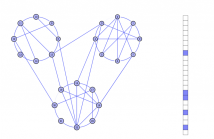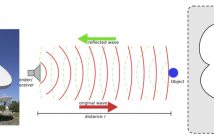ICASSP is the world's largest and most comprehensive technical conference on signal processing and its applications. It provides a fantastic networking opportunity for like-minded professionals from around the world. ICASSP 2016 conference will feature world-class presentations by internationally renowned speakers and cutting-edge session topics.

- Read more about The Graph FRI Framework–Spline Wavelet Theory and Sampling on Circulant Graphs
- Log in to post comments
- Categories:
 12 Views
12 Views- Read more about Choosing the diagonal loading factor for linear signal estimation using cross validation
- Log in to post comments
Linear signal estimation based on sample covariance matrices (SCMs) can perform poorly if the training data are limited and the SCMs are ill-conditioned. Diagonal loading (DL) may be used to improve robustness in the face of limited training data. This paper introduces two leave-one-out cross-validation schemes for choosing the DL factor. One scheme repeatedly splits the training data with respect to time, while the other repeatedly splits the out-of-training data with respect to space.
- Categories:
 21 Views
21 Views
- Categories:
 17 Views
17 Views- Read more about D-FW: Communication Efficient Distributed Algorithms for High-dimensional Sparse Optimization
- Log in to post comments
- Categories:
 15 Views
15 Views- Read more about Distributed Beamforming in Relay Networks for Energy Harvesting Multi-Group Multicast Systems
- Log in to post comments
- Categories:
 9 Views
9 Views- Read more about Hybrid Beamforming with Two Bit RF Phase Shifters in Single Group Multicasting
- Log in to post comments
- Categories:
 28 Views
28 Views- Read more about On Training the Recurrent Neural Network Encoder-Decoder for Large Vocabulary End-to-end Speech Recognition
- Log in to post comments
Recently, there has been an increasing interest in end-to-end speech
recognition using neural networks, with no reliance on hidden
Markov models (HMMs) for sequence modelling as in the standard
hybrid framework. The recurrent neural network (RNN) encoder-decoder
is such a model, performing sequence to sequence mapping
without any predefined alignment. This model first transforms the
input sequence into a fixed length vector representation, from which
the decoder recovers the output sequence. In this paper, we extend
- Categories:
 19 Views
19 Views- Read more about Pilot Aided Direction of Arrival Estimation for mmWave Cellular Systems
- Log in to post comments
Direction of arrival (DoA) estimation of high-resolution beams is critical for cell search and maintaining communication in millimeter wave (mmWave) cellular systems. All-digital solutions for DoA estimation, however desirable for their flexibility and performance, are impractical because of their use of high-speed, power hungry Analog-Digital Converters (ADCs) at each antenna element. In this paper we take a novel approach to formulate a fully digital DoA estimation solution.
- Categories:
 34 Views
34 Views- Read more about TIME DOMAIN ACOUSTIC CONTRAST CONTROL IMPLEMENTATION OF SOUND ZONES FOR LOW-FREQUENCY INPUT SIGNALS
- Log in to post comments
Sound zones are two or more regions within a listening space where listeners are provided with personal audio. Acoustic contrast control (ACC) is a sound zoning method that maximizes the average squared sound pressure in one zone constrained to constant pressure in other zones. State-of-the-art time domain broadband acoustic contrast control (BACC) methods are designed for anechoic environments. These methods are not able to realize a flat frequency response in a limited frequency range within a reverberant environment.
- Categories:
 24 Views
24 Views